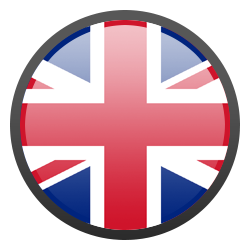
Quel pli à Arradon ?

Contexte local
À la pointe d'Arradon, on retrouve de nombreux filons composés de migmatites et de granite. Ces roches résultent de la fusion partielle de roches préexistantes qui se traduit par l’apparition de veines disposées en bandes parallèles. Les filons se sont formées dans les profondeurs de la chaîne hercynienne il y a plus de 300 millions d'années. Mais à certains endroits les bandes ne sont pas parallèles et l'on peut observer des plis.
Définition d'un pli
Lorsque des couches de terrain de l’écorce terrestre sont soumises à des contraintes tectoniques, ces roches vont, à la longue, se déformer. Les déformations sont d’abord souples, non cassantes. On obtient alors des ondulations de terrain appelées plis. On parle de plissement des roches.
On peut rencontrer des plis de toutes dimensions, depuis des microplis inférieurs au centimètre jusqu’à des plis de dimension régionale. Selon la nature de la roche, l’importance et l’orientation des contraintes, la durée du phénomène… on peut observer toute une variété d’aspect des plis.

On appelle charnière, la région du pli où la courbure de la couche est maximale. Un flanc est l'endroit d'un pli où la courbure est la plus faible. Ils sont situés en alternance avec les charnières des plis.

Questions
Rappel concernant les Earthcaches :
Il n'y a pas de conteneur à rechercher ni de logbook à signer. Après avoir été sur les lieux pour chercher les réponses aux questions, loguez cette cache "Found it" et envoyez-moi vos propositions de réponses, en précisant le code GC de la cache, soit via mon profil, soit via la messagerie geocaching.com (Message Center), et je vous contacterai en cas de problème.
Attention, l'earthcache n'est pas forcément accessible à marée haute ! Pensez à consulter les horaires de marées avant de venir sur place.
Questions :
1- Quand s'est formée la roche devant vous ?
2- Quel type de pli vous pouvez observer sous la zone bleue ?


What fold in Arradon ?

Local context
At the point of Arradon there are many veins made up of migmatites and granite. These rocks result from the partial fusion of pre-existing rocks which results in the appearance of veins arranged in parallel bands. The veins formed in the depths of the Hercynian Range more than 300 million years ago. But in some places the bands are not parallel and we can observe folds.
Definition of a fold
When layers of the earth's crust are subjected to tectonic stress, these rocks will deform over time. The deformations are initially flexible, not brittle. This gives rise to undulations of land called folds. We are talking about folding rocks.
We can find folds of all sizes, from micro-folds smaller than a centimeter to regional folds. Depending on the nature of the rock, the importance and orientation of the stresses, the duration of the phenomenon ... one can observe a whole variety of appearance of the folds.

The region of the fold where the curvature of the layer is greatest is called hinge. A blank is where the curvature is weakest in a fold. They are located alternately with the hinges of the folds.

Questions
Reminder concerning the Earthcaches :
There is no container to look for or a logbook to sign. After having been on the spot to look for the answers to the questions, log this cache "Found it" and send me your answers, specifying the GC code of the cache, either via my profile or via messaging geocaching.com (Message Center), and I will contact you if there is a problem.
Please note that the earthcache is not necessarily accessible at high tide! Be sure to check the tide tables before you arrive.
Questions :
1- When did the rock form in front of you?
2- What type of fold can you see under the blue area?

https://www.geowiki.fr/index.php?title=Pli